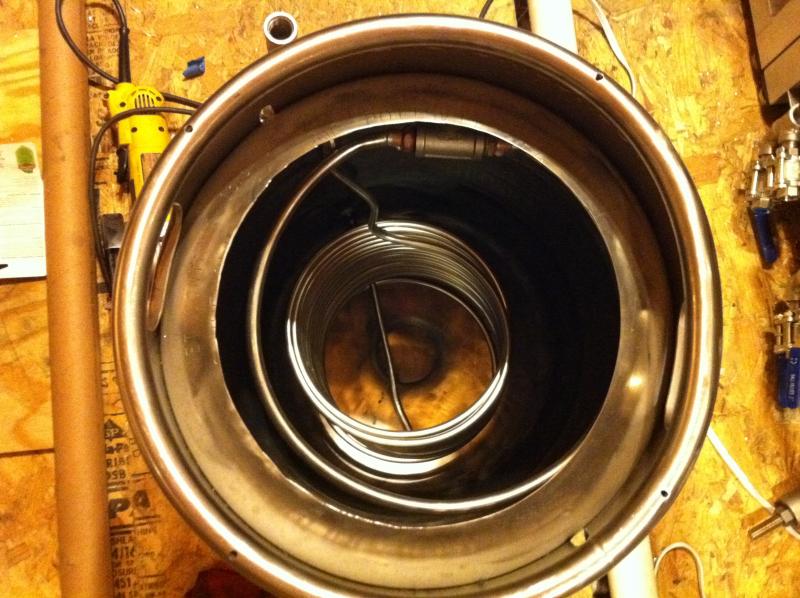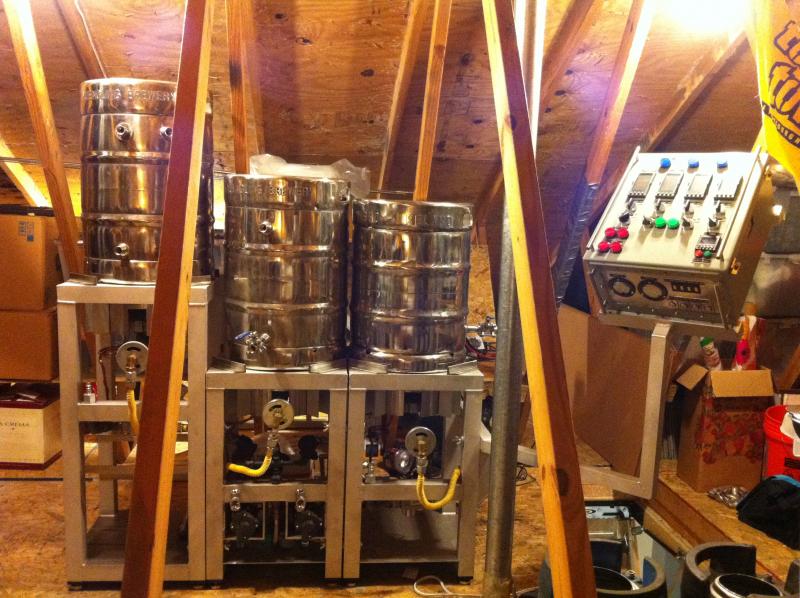scouser007
Active Member
I have 1 week to figure this out and buy parts as I have planned the official brewery ribbon cutting party.
Hot side aeration is the real topic.
I have a 50ft 3/8 piece of stainless tube coiled up in my HLT. I am using this as a heat exchanger. This leads to several questions that I would really like some input on.
My plan is to have the wort recirculate the whole time from the Mash Tun through the tubing in the HLT. Temps will be regulated on the heat exchanger output and in the Mash Tun. The idea is to use indirect heat on the heat exchanger to maintain the temp, and the burner below the Mash to turn on as little as possible. Of course this will change given the speed at which I can recirculate.
So the questions:
1 - If I do a recirculation do I need to "dough in"? Will the grain bed channel? I was thinking of doing the recirculation with the strike volume and create a nice grain bed filter right from the beginning.
2 - Strike volume. From what I understand this volume is limited to slow the conversion to sugars so you do not end up with a thin beer. If I increase this volume to account for dead volume below the bed and tubing volumes can I lower the mash time and still have the same end game? Does it not balance in this way, or is that too hard of a balance to hit (iodine test)
3 - Sparging has me confused due to hot side aeration. If i recirculate and use a stainless ring at the top of the keg so it splashes down evenly and does not disturb the bed have I not cause an oxidation issue? Yet I see these set ups everywhere spinning around impressivly in some cases. Is this because its only used for mash out/fly sparge etc? Would you not still be introducing water with a high dissolved oxygen content through the grain bed and into the wort?
4 - if 3 is a problem what is the best way to introduce the water/wort back into the mash tun given I have a hole punched into the top of my keggle for the return? I have all kinds of 1/2 tubing laying around at this point, the problem I see is I will be doing 5 and 10 gallon batches, barley wine, and light stuff for my wife. So varing grain amounts/heights.


Hot side aeration is the real topic.
I have a 50ft 3/8 piece of stainless tube coiled up in my HLT. I am using this as a heat exchanger. This leads to several questions that I would really like some input on.
My plan is to have the wort recirculate the whole time from the Mash Tun through the tubing in the HLT. Temps will be regulated on the heat exchanger output and in the Mash Tun. The idea is to use indirect heat on the heat exchanger to maintain the temp, and the burner below the Mash to turn on as little as possible. Of course this will change given the speed at which I can recirculate.
So the questions:
1 - If I do a recirculation do I need to "dough in"? Will the grain bed channel? I was thinking of doing the recirculation with the strike volume and create a nice grain bed filter right from the beginning.
2 - Strike volume. From what I understand this volume is limited to slow the conversion to sugars so you do not end up with a thin beer. If I increase this volume to account for dead volume below the bed and tubing volumes can I lower the mash time and still have the same end game? Does it not balance in this way, or is that too hard of a balance to hit (iodine test)
3 - Sparging has me confused due to hot side aeration. If i recirculate and use a stainless ring at the top of the keg so it splashes down evenly and does not disturb the bed have I not cause an oxidation issue? Yet I see these set ups everywhere spinning around impressivly in some cases. Is this because its only used for mash out/fly sparge etc? Would you not still be introducing water with a high dissolved oxygen content through the grain bed and into the wort?
4 - if 3 is a problem what is the best way to introduce the water/wort back into the mash tun given I have a hole punched into the top of my keggle for the return? I have all kinds of 1/2 tubing laying around at this point, the problem I see is I will be doing 5 and 10 gallon batches, barley wine, and light stuff for my wife. So varing grain amounts/heights.





